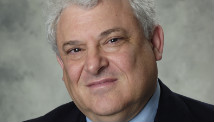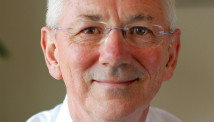MELBOURNE, Australia (AP) — Andy Murray has finally beaten Roger Federer at a Grand Slam.
The U.S. Open champion beat 17-time major winner Federer 6-4, 6-7 (5), 6-3, 6-7 (2), 6-2 Friday at the Australian Open, calling it a massive confidence boost as he attempts to win his second consecutive major.
Murray, who missed his chance to serve out the match at 6-5 in the fourth set, will play defending champion and top-seeded Novak Djokovic in Sunday's final. Djokovic cruised past David Ferrer in straight sets in just under 90 minutes — 2 1/2 hours less than Murray's semifinal.
Advantage Djokovic.
There was some controversy in that 12th game of the fourth set when Federer appeared to glare and say something to Murray when the Scotsman stopped momentarily behind the baseline during the rally.
Murray ignored it after winning the point, but conceded serve in that game and lost the ensuing tiebreaker before regrouping in the fifth set.
"I mean, it wasn't a big deal," Federer said. "We just looked at each other one time. That's OK, I think. We were just checking each other out for bit. That wasn't a big deal for me — I hope not for him."
While Murray came into the match with a 10-9 career advantage, Murray had never beaten Federer in their three previous meetings at a major — the finals of the 2008 U.S. Open, 2010 Australian Open and last year at Wimbledon.
"It's always tough against him, when he plays in Slams is when he plays his best tennis," Murray said. "When his back was against the wall at 6-5 and I was serving, he came up with some unbelievable shots. I just had to keep fighting."
Federer outplayed Murray at stages of the match, but the 25-year-old Scotsman appeared to have the legs and stamina over the 31-year-old Federer in the fifth set, including a service break to clinch the tense match.
"It's big. I never beat Roger in a Slam before. It definitely will help with the confidence," Murray said. "Just knowing you can win against those guys in big matches definitely helps."
Federer said he was playing catch-up all night.
"Definitely it was more of a chase," Federer said. "I think I had my chances a little bit. Obviously, you're going to go through a five-setter with some regrets. But overall, I think Andy was a bit better than I was tonight."
With a capacity crowd of 15,000 at Rod Laver Arena watching, including the Australian legend Laver himself, Federer opened the match serving and was in trouble early, losing a 28-rally point to set up break point for Murray. But Federer held the game with a stunning cross-court forehand that just looped over the net from the baseline.
Murray, who had not lost a set through five rounds at Melbourne Park this year, had the first service break — on his fourth break point — to lead 2-1. It came in unusually cool summer conditions in Melbourne — breezy and temperatures of only 60 degrees during most of the match.
The crowd was initially evenly split between Federer and Murray supporters — and at times, they were competing to be heard. At one point in the second set, a group of Murray fans wearing white shirts with blue letters spelling his nickname "Muzza" stood to chant Murray's name, while a group of Federer supporters with Swiss flags on their cheeks and shirts chanted Federer's name.
Earlier Friday, top-seeded Sara Errani and Roberta Vinci of Italy won the first title of 2013 at Melbourne Park, beating the unseeded Australian pair of Ashleigh Barty and Casey Dellacqua 6-2, 3-6, 6-2 for the women's doubles championship.
The 16-year-old Barty was attempting to become the youngest Grand Slam champion since Martina Hingis won the Australian Open singles title in 1997.
On Saturday, defending champion Victoria Azarenka plays sixth-seeded Li Na of China for the women's singles title. Li lost the Australian Open final to Kim Clijsters in 2011 two months before winning her first and only Grand Slam at the French Open.
"Last time was more exciting, (more) nervous because it was my first time to be in a final," Li said. "But I think this time (I'm) more calmed down, more cool."
Azarenka leads 5-4 in career matches, including the last four times they've played.
"I'm really hungry to defend my title," said Azarenka, who needs to beat Li to retain her No. 1 ranking. "I've put myself in the position to give it the best shot."
If Li win, Serena Williams will regain the No. 1 ranking.
Also on Saturday, American brothers Bob and Mike Bryan will play their fifth consecutive Australian Open doubles final and attempt to win their record 13th Grand Slam doubles championship. They'll play the Dutch pair of Robin Haase and Igor Sijsling.


